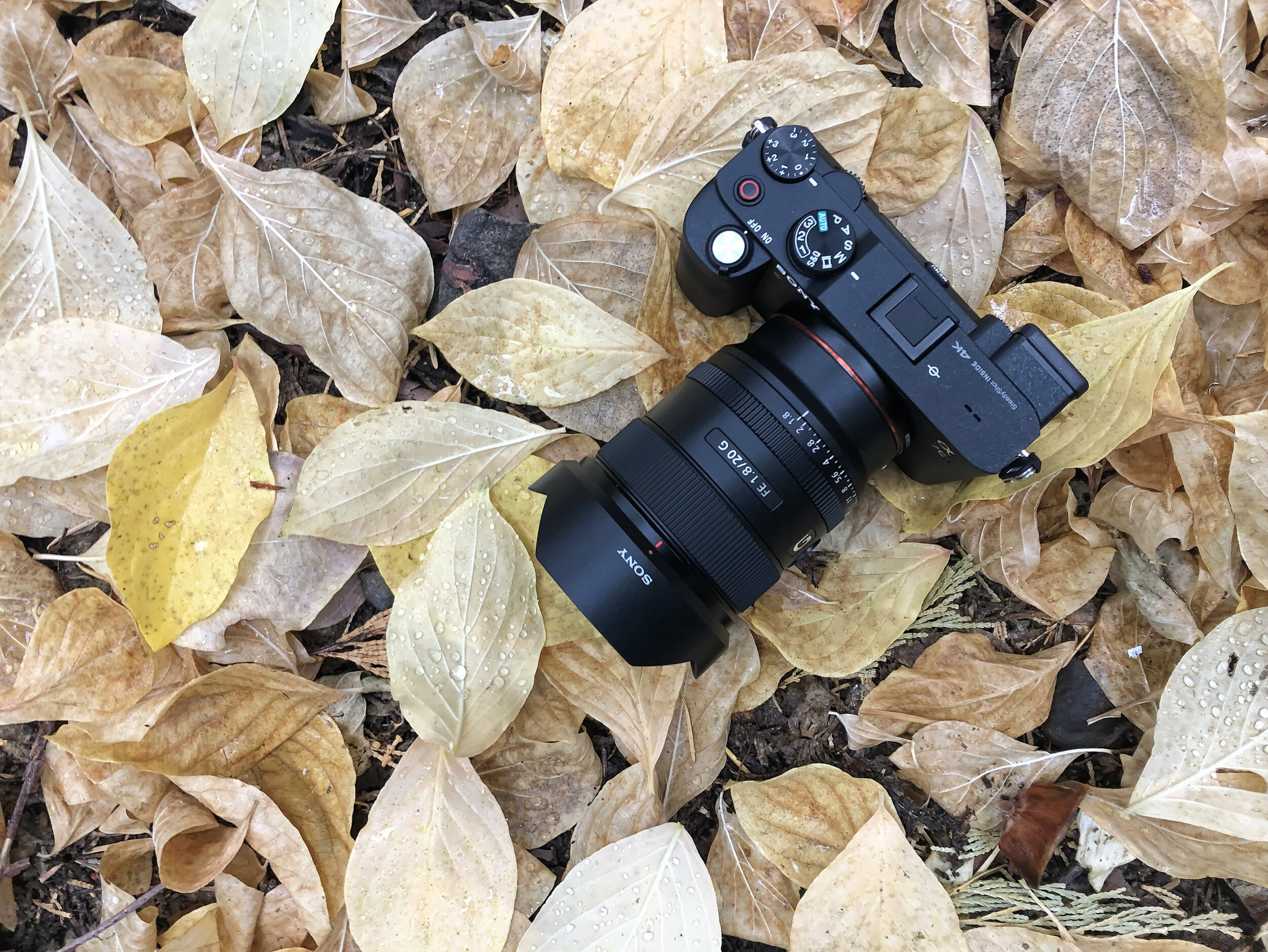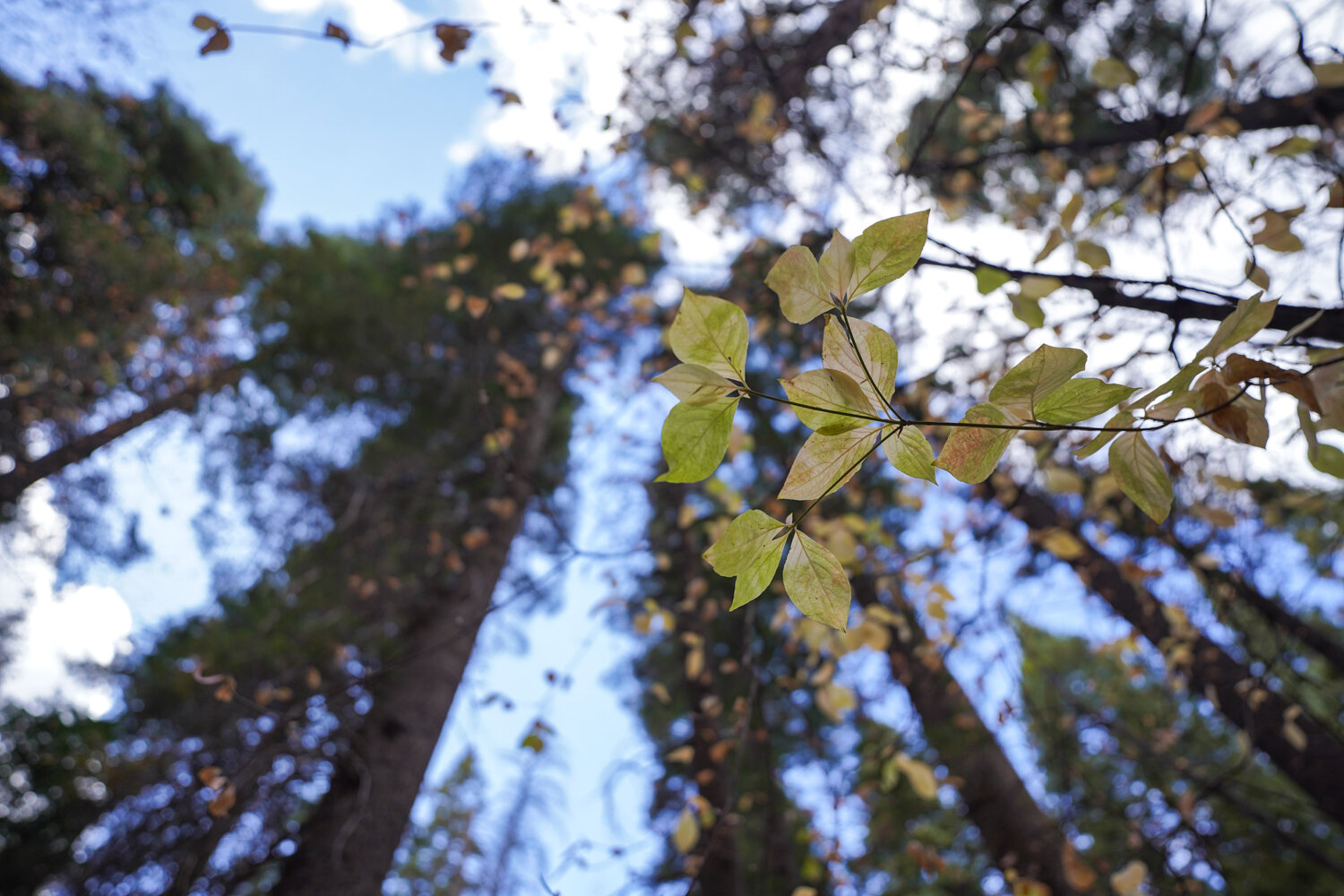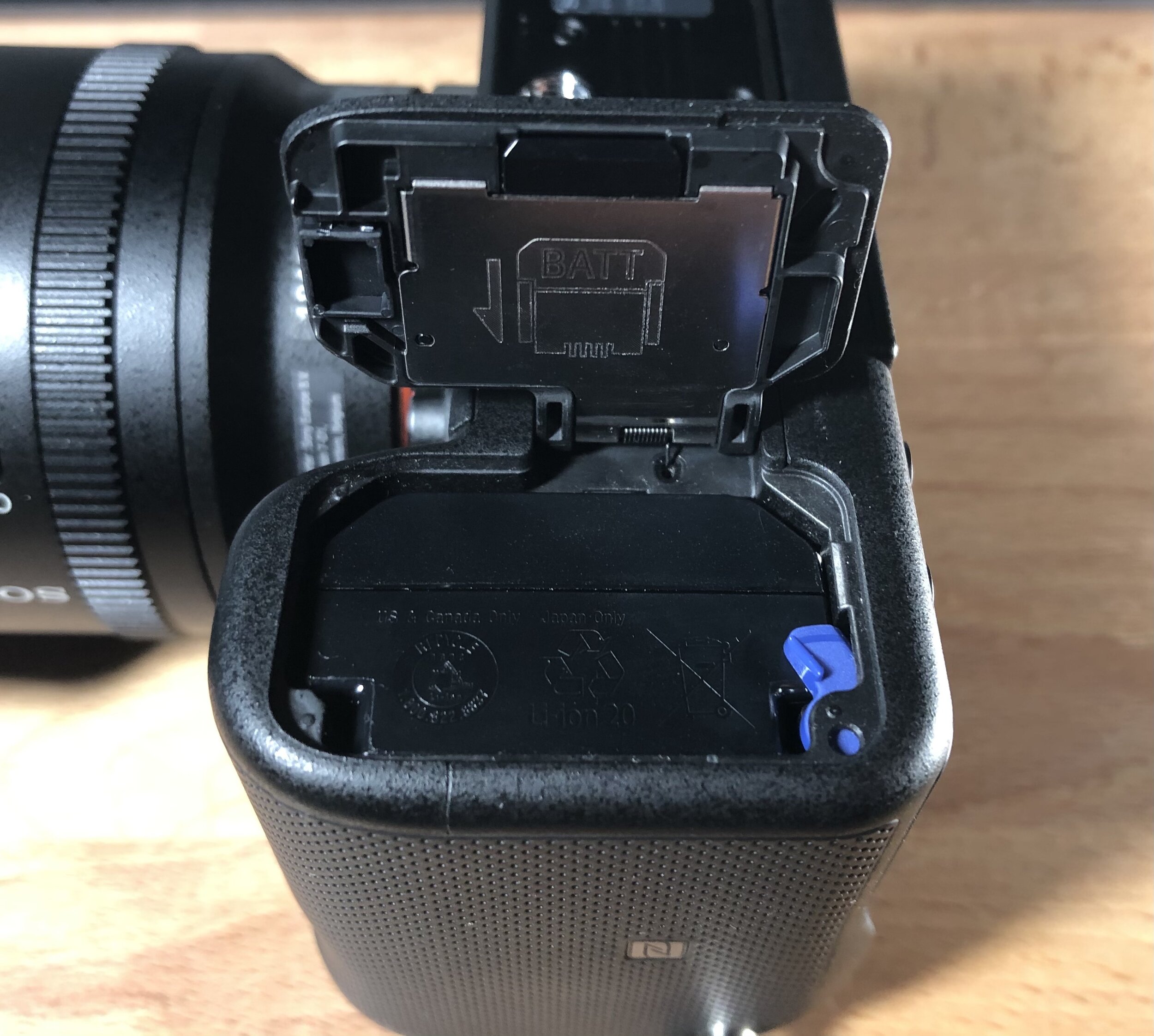Sony a7C Review: It’s all about the packaging.
Introduction
The Sony a7C forgoes Sony’s typical pattern of leapfrogging its own lineup with a headline-grabbing camera release for something that’s more vanilla. At the root of it, the a7C is essentially the a7III reincarnated into a rangefinder-style form factor. Gone is the A7III’s EVF “hump” in exchange for a dimensionally smaller camera bearing resemblance to it’s APS-C sibling, the a6600. While the a7C and a7III share a lot in common on paper, the a7C gives up a few of the a7III’s photographer-friendly features like a dedicated AF joystick and additional custom buttons in exchange for an articulating LCD screen, gyro sensor, and dedicated movie record button intended to please hybrid shooters. Thankfully, the a7C also incorporates Sony’s rock-solid Realtime Tracking autofocus algorithm that’s found in the a7RIV, a9 and a6600.
The Size Proposition
The main proposition of the a7C is a powerful, fully-featured 35mm camera body in the smallest form-factor possible. The a7C offers a camera that is just as small as it’s APS-C sensor sibling a6600 that when paired with delightfully compact primes like Sony’s G 20mm F/1.8 lens offers a compact kit by any standard. While the camera is well-suited to Sony’s small primes, the size equation starts to fall apart when one begins looking at some of the lens options available. For example, professional zooms like the 16-35 F/2.8 GM, 24-70 F/2.8 GM, 70-200 F/2.8 GM, 200-600mm 5.6-6.3 G, would be considered an absolutely gargantuan match for this body. For these reasons, slower zooms or primes are a far better match on the a7C.
Sony clearly took a leaf out of both the NEX series when they created the a7C. If it weren’t for the a7C’s relatively huge sensor to body size ratio, one would be hard pressed to tell the difference between the a6600 and a7C at first glance. The other key differences include the shape of the grip - the a6600 has a larger and more ergonomic one for my hands. If you are used to using cameras with a shallow grip, this one will feel right at home. If you are someone who likes to have really good purchase on your camera and are inclined to use add-on grips, this is not likely to be your favorite rig. My personal impression is that the grip on this body is generally “OK” in use. When I pick it up, I miss the more contoured feel of the a6600’s grip, and I can’t help but question if people would really mind if the camera were a few millimeters larger to accommodate a more substantial and ergonomic grip. I also dislike how very little space there is between the lens mount and the grip which makes the camera nearly impossible to hold onto properly with gloves. With that being said, I have no huge qualms with the grip, and understand that compromises were made to keep the overall package as small as possible.
Not much clearance here for large fingers or gloves.
This trend of downsizing continues with the a7C’s viewfinder, which matches the 2.4 mil dot pixel density of the a7III and a6600’s but shrinks the magnification down from 0.78x to a puny 0.59x. I’m not a huge fan of the EVF to be honest, but I’m happy it at least has one. I can see why they chose to go this way - it seems they wanted a sleek flat profile on top plate instead of any kind of viewfinder “bulge”, and they also had to account for the a7C’s slightly larger and more square shape articulating LCD as compared to the A6600. The consequence is a viewfinder that lacks the immersive feel and usability offered by other mirrorless cameras. Viewfinder clarity is decent, colors are accurate and bright without looking washed out, but if you squint really hard you can see pixels. I think it’s a shame they didn’t go for something better like the 3.69 m dot variant found in other compact full-frame cameras like the Leica Q2. With all that said, I think anyone who shoots outdoors and understands how essential a viewfinder can be will accept its faults and will grow used to it in due course.
From the a7III parts bin we get the same sensor, 10FPS mechanical burst speed, rotary wheel, LCD panel (plus articulation), non-locking exposure compensation dial, rear command dial. Thankfully, the camera also adopts the a7III’s amazing Z batteries, which, as far as I can tell, offer some of the longest batter life in the industry for a mirrorless camera. This is a huge plus if one is looking for a small camera with endurance.
Usability
From a usability perspective, when one picks up the a7C and goes to work with it, it feels straight away very similar to the a7III and a6600 in operation. The camera adopts Sony’s previous-generation menu system, which in my opinion works just fine. I don’t like to spend a huge amount of time in menus, and I take advantage of Sony’s custom menus to set the camera up the way I like it from the start.
The FE 20 F/1.8 G looks right at home on the A7C.
Sadly, the camera still lacks proper touchscreen functionality offered by the new a7SIII, and touch functions are limited to touch selecting AF points, focus pulls in video, and double tapping to check focus during playback. If you are the kind of person that likes to use touch feedback on the LCD for a lot of shooting functions, you could be a bit disappointed here. For me, I’d rather use a dedicated button for 95% of what I’m doing.
One of the great advantages of large format cameras is dynamic range, which offers a lot of recoverable detail in scenes with bright highlights and deep shadows. The a7C has oodles of DR.
The overall photographic experience is good with this camera. The EVF and mechanical shutter mechanism is a fast 10 FPS with minimal blackout, the AF is great, and I love how Sony provides depth of field preview in real-time without needing to stop down the lens using a custom button. One unexpected thing is that the mechanical shutter mechanism is relatively loud. One can switch the camera into electronic shutter modes if needed, but unfortunately rolling shutter is still an issue with the camera in this mode and it is best reserved for scenes without fast action.
Build Quality
The camera is a mixed bag in terms of build quality. On the one hand, it’s magnesium body feels solid and Sony advertises a moderate level of weather sealing, but it unfortunately adopts the Achilles heel of older Sony camera bodies - a battery card door with no visible rubber gasket to prevent moisture ingress. I think this is a missed opportunity and one that is confusing when one considers both the a9 II and a7RIV rectified the issue with a rubber gasket around the battery door.
I also appreciate that the accessory port doors were improved with a new hinge design instead of the plastic flappy bits found on Sony cameras of old, but I wish they were made out of rubber instead of plastic. This would make them a lot less susceptible to being broken off during heavy use.
From left to right: 1)Flip LCD; 2) plastic input doors; 3) battery door.
Optical Stabilization
In-body image stabilization (SteadyShot) works good, and in my limited experience it doesn’t seem appreciably different than any other Sony Camera I’ve tried in recent memory. It is not, in my opinion, to the same level of correction as Canon’s R5, Panasonic, or Olympus, but it serves the stills shooter well.
Image Quality
There’s not a lot to say about image quality, other than it’s fantastic. It’s a relatively tiny camera with one of the best full-frame image sensors on the market. No, it’s not going to give you appreciably different results from any other brand using a comparable imaging sensor, especially if you shoot in RAW and with comparable lenses. What it does offer though is high dynamic range and low noise in something that is truly compact and houses an interchangeable mount.
That being said, the online photography community seems (probably overly) obsessed with large sensor formats. The image quality coming out of most professional mirrorless camera bodies and lenses regardless of format has gotten so good that in a blind test, it’s difficult if not impossible to pick out what photos were taken with which camera and lens system. In my opinion, it’s when you push cameras to the limits that larger format cameras like the a7C tend to outperform smaller ones and produce more usable results. Scenes that are dark, have extreme shadows or highlights like the deep woods photo above, or cases where the artist wishes to maximize shallow depth-of-field effects are all situations where larger formats shine. I happily use multiple formats, and prefer selecting a camera or lens combinations for a specific task, and prefer not getting too bogged down with it.
Video
I’m not a dedicated video shooter, but I do like what the camera offers for an amateur videographer.
The main pros for video include:
A lower profile body that matches well with gimbal use. An EVF hump on a DSLR shaped camera can interfere with the gimbal mechanism on smaller gimbals
In-body gyro sensor which can be used to stabilize footage in post
An articulating LCD which is good not only for selfie mode, but also for easier viewing angles while attached to a gimbal because it puts it to the side where it won’t be blocked by the gimbal arms
Fast, accurate, and reliable video AF system
On the cons side:
Some video users may be disappointed by the lack of 4K/60p recording.
For video, the IBIS does great in stationary type shooting, but falls apart a bit if the camera is in motion, for example, while walking at the same time as recording.
Like the a7III, rolling shutter is still an issue with the camera. This drawback is somewhat negated by the fact that the camera offers software correction in post using built-in gyroscopic sensor data - a clear advantage over the a7III.
Comparisons
Versus the A7III
The most meaningful differentiator that I see from the a7III in favor of the a7C is the adoption of the latest Sony Realtime Tracking AF system. In my a6600 review, I wrote about how I thought real-time tracking - and in particular eye-tracking and flexible spot tracking modes - were a real game changer. This focus mode has completely transformed how I approach photography with Sony cameras: whereas before I would never fully rely on something like Nikon or Canon’s 3D tracking or AI Servo Tracking and instead resort to single point focus modes, Real Time Tracking functions almost flawlessly on the a7C without needing to resort to other AF shooting modes very often. I can pick the camera up, approach just about any shooting situation, put the focus square on my intended subject, and have the camera follow the subject around in 3D space with incredible tenacity. Then simply release the shutter button and you are back to square one. The end result is I spend way less time fidgeting with AF point selection and can rely almost exclusively on this tracking mode to reliably obtain critical focus through a focus and recompose approach. For me, it’s something that makes photography more enjoyable, because you lose some of the anxiety of operating joysticks, and can instead focus almost entirely on framing and composition.
The a7III will continue to serve many a photographer well, and it’s a more well-rounded machine than the a7C in several appreciable ways. However, at time of writing this article, I’d choose the a7C all day, because it offers one of the best autofocus systems available on a modern camera. If Sony were to upgrade the firmware on the A7III to incorporate Realtime Tracking, it would be harder to recommend the a7C if size or an fully articulating LCD weren’t top priorities. It should technically be possible for Sony to upgrade the a7III’s firmware, since they share the same processor, but Sony is probably trying to protect the a7C’s sales at the moment.
“The main proposition of the a7C is a powerful, fully-featured 35mm camera body in the smallest form-factor possible."
Versus the A6600
The biggest difference between the a6600 and a7C is the sensor size. The main take I have on 35mm sensors is not that they are technically superior to smaller formats - they just offer something different. The main advantages of a larger format, from my perspective, are that the files produced by them generally have less noise at comparable ISOs, the user has more control over depth of field, and there often is more latitude for adjusting shadows and highlights with raw files (i.e., superior dynamic range).
If we accept that there are not earth shattering differences between the two cameras as it relates to image quality or overall functionality, then we must move on to talk about the lenses. On the one hand, one could argue the a7C has access to way more full-frame lenses than the a6600 has APS-C lenses (excepting that you can use full-frame lenses on the a6600 as long as you can suffer the crop), but on the other hand, I have to wonder how many people plan to slap a 200-600 or 600 F/4 behemoth on this tiny rangefinder body. I’m confident the camera processing and autofocus could certainly handle it, but the ergonomics would be atrocious. I would probably personally draw the line at the 100-400 GM, and even then I’d strongly prefer using it with a gripped body. With the a6600 one at least has access to nice compact lenses befitting of the camera body, like the OSS 16-55 F/2.8 and 70-350 F/4.5-6.3. Time will tell what lenses Sony brings in the future that truly make sense on this camera.
Overall, I think the decision between these two cameras would depend largely on budget, what lenses the camera user has at their disposal or wishes to use in the future, and whether the modest image quality benefits offered by a 35mm sensor are a top priority.
Summary
In my mind, the value proposition for the a7C falls squarely on the desire for the smallest possible 35mm sensor camera body and access to Sony’s latest autofocus system. At the end of the day, the a7C succeeds in offering a pleasing, well-rounded camera to use that could suit a variety of photographic styles. Photographers that come to mind as being potentially interested in a camera like this may include:
1) travel photographers
2) v-loggers and casual videographers
3) Sony shooters looking for a compact B-camera
4) anyone interested in using small primes
5) anyone who wants the latest, most refined Sony autofocus without splurging for an A9.
A roundup list of pros/cons of the camera are listed below.
Pros:
Very small for a 35mm sensor camera body that offers IBIS
Realtime Tracking autofocus is reliable and fun
Z battery offers incredible endurance, especially in a camera this small
Retains fast mechanical burst for action shooting
Flip screen is ideal for video gimbal use
Cons:
Viewfinder is disappointingly small and low resolution
Grip is difficult to use if one has large hands or gloves
Weather sealing could be improved
Limited current selection of lenses that balance well with such a small body
Poor touch interface inherited from prior Sony cameras











